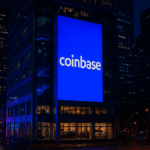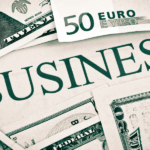The economic landscape in the United States has witnessed a notable uptick in business activity, attributed partly to recent policy developments. With the government shutdown brought to a close, several sectors have reported increased confidence, which has bolstered economic performance, as per the latest data released by S&P Global. This resurgence marks a significant phase, highlighting the influence of political resolutions on market dynamics.
How has business activity shifted in recent months?
Business activity in the US has reached a four-month high, with the Flash U.S. Composite PMI Output Index rising slightly from October to November. Previously, such steady growth was less tangible; however, recent months have seen a stronger alignment across various sectors. The services sector, in particular, celebrated its most substantial increase in output since July, spurred by the largest jump in new business this year. Conversely, the manufacturing sector showed a strong production increase, albeit with a decrease in new orders.
What factors have shaped business optimism?
The resolution of the government shutdown on November 12 has played a central role in rejuvenating business sentiment. This shift is reflected in the renewed business confidence for the year ahead, with optimism levels reaching a significant high across both manufacturing and services industries. Previously, uncertainty due to political instability dampened business sentiment, but the commitment to address these challenges appears to have revitalized confidence. S&P Global’s Chief Business Economist, Chris Williamson, highlighted these positive changes:
“Hopes for further interest rate cuts and the ending of the government shutdown have boosted optimism alongside a broader undercurrent of improved economic optimism and reduced concerns over the political environment.”
The recent government shutdown, spanning a record 43 days, considerably disrupted various businesses. The U.S. Chamber of Commerce and the U.S. Travel Association highlighted significant economic impacts, estimating multi-billion dollar weekly losses for contractors and the travel industry. Comparatively, the current boost in business activity post-shutdown presents a recovery narrative that contrasts sharply with the preceding weeks of economic stagnation.
The latest economic data from S&P Global also indicates a projected GDP growth rate of approximately 2.5% in the fourth quarter. Williamson commented on this trend, noting,
“The upturn also looks encouragingly broad-based for now, with output rising across both manufacturing and the vast services economy.”
This statement underscores the breadth of economic recovery within the country.
As sectors remain vigilant towards potential interest rate adjustments, the strategic maneuvers by financial institutions and policymakers will continue to be crucial for sustaining this growth trajectory. These developments not only reflect immediate economic conditions but also the reverberations of policy resolutions on future strategies.
Going forward, businesses will likely focus on maintaining momentum by capitalizing on improved economic conditions and adjusted fiscal policies. Insights from this period can inform how businesses and policymakers navigate future uncertainties, emphasizing the need for agility and strategic foresight in economic planning.









